|
March 13, 2021
Friends and Neighbors,
I hope that you and your loved ones are doing well, staying healthy, and looking out for your neighbors and friends in these difficult times.
Today is another typical day for this phase of the pandemic in Oregon. Case numbers remain relatively low, as does our statewide positivity rate. There’s a notable drop in hospitalizations, with our lowest COVID hospitalization rate in many months.
Yesterday was another big day for vaccinations. For the first time in Oregon, we have now had more immunizations via the Moderna vaccine than the Pfizer vaccine. We’ll see if that continues. We continue to be administering nearly all of the vaccines that are coming to the state. More than one in five Oregonians have now received their first dose.
Now that we’re approaching mid-March, we’re seeing many retrospectives and recognitions of the one-year anniversary of various events related to COVID. Well, as it happens, today is the one-year anniversary of my first “COVID Newsletter,” dated March 13, 2020. You can read it here. https://content.govdelivery.com/accounts/ORLEG/bulletins/28118ed
Little did I realize that this would be the first of a daily attempt to understand what was going on with the pandemic and to communicate what I’d learned to constituents and the general public. It coincided with the initial decision to close our schools to in-person instruction, and it was clear that we were being confronted with something very serious. Further down in the newsletter I’ll share that part of the newsletter that summarized what legislators were learning about the pandemic at the time. It reflects the many uncertainties of the moment and makes for fascinating reading one year later.
Please stay safe, and let me know if you have any questions about information in today’s newsletter.
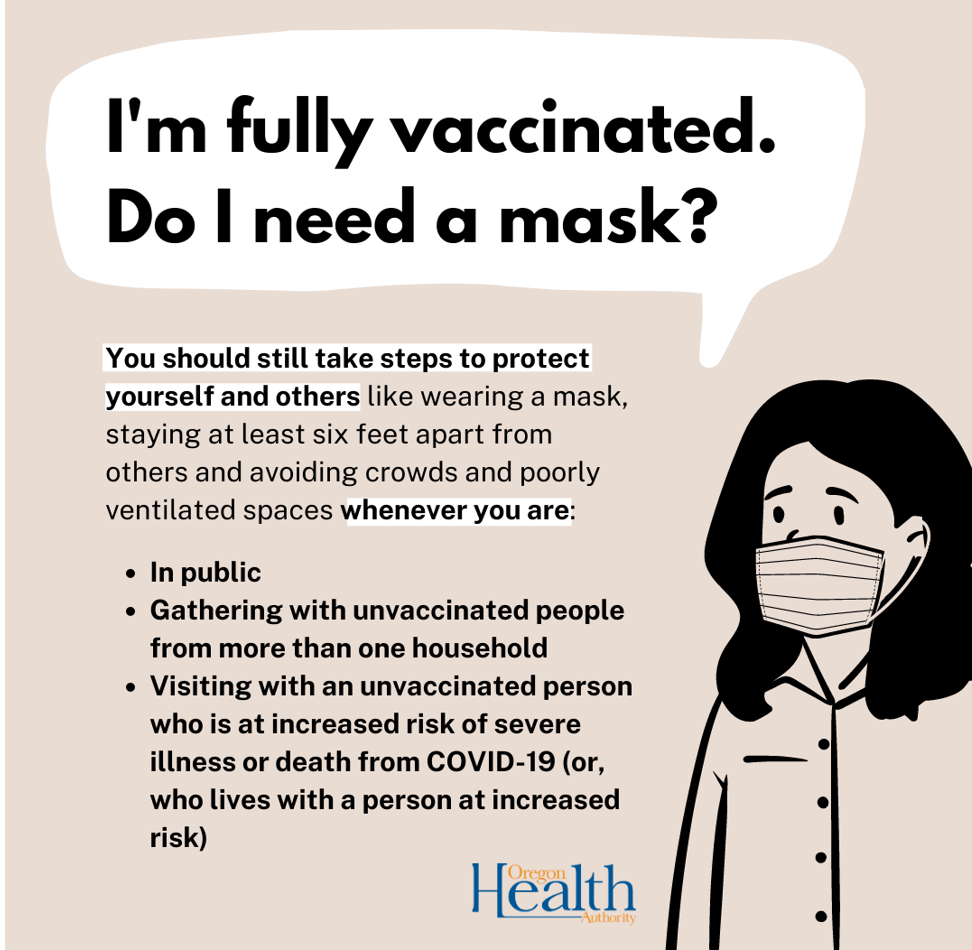
TODAY’S CORONAVIRUS AND CORONAVIRUS RESPONSE UPDATE
-
New COVID Cases: OHA reports 365 new COVID cases today. The cumulative number of cases in Oregon since the beginning of the pandemic is 159,352.
-
Variant COVID Cases: OHA doesn’t report on the variants over the weekend. So the reported number of the B.1.1.7 (UK) variant in Oregon remains at 17, and the P.1 (Brazilian) variant is still at 1.
-
Positive Test Results: OHA reported 515 positive tests today. The cumulative total of positive test results since the beginning of the pandemic is now 230,776.
-
Total Tests: OHA reported an additional 14.454 tests today. Our cumulative total of reported tests is now 3,953,272.
-
Positivity Rate: The test positivity ratio for Oregon today is 3.6%.
-
Hospitalization Information: Over the weekend OHA only reports on the first two bulleted items. The remainder will be updated on Monday.
- Patients Currently with Confirmed COVID-19: 104 ( than yesterday)
- ICU Patients Confirmed w COVID-19: 23 (same as yesterday).
- Available ICU Beds: 173 (5 more than yesterday)
- Other Available Beds: 592 (13 more than yesterday).
- Confirmed COVID-19 Patients Currently on Ventilators: 8 (1 fewer than yesterday).
- Available Ventilators: 765 (5 fewer than yesterday).
-
Deaths: I’m sorry to report 3 additional COVID deaths today. The total number of COVID deaths in Oregon is now 2,322.
-
Vaccinations: As of the end of yesterday, here are the latest numbers:
- New Immunizations Reported Today: 32,429
- 18,556 were conducted yesterday
- 13,873 were conducted earlier, but the reports were received yesterday (there can potentially be a three-day window for reporting)
- Total First and Second Doses Administered So Far: 1,301,968
- 637,098 Pfizer doses
- 652,333 Moderna doses
- 11,656 Johnson & Johnson doses
-
Additional Quick Updates:
- The Oregonian’s Hillary Borrud has an in-depth look at the use of walkouts as a tool for Republican lawmakers in Oregon. Check it out here.
- The New Yorker’s Sue Halpern takes a look at the challenges behind vaccine production and delivery. President Biden has ordered a big increase in vaccines coming to states. But can the companies deliver? Read here.
(From the Archives: 3/13/2020)
Coronavirus Update
So much has already changed since I last wrote about the state’s response to the spread of the new disease (now officially a pandemic). Fortunately, the Oregon Health Authority has continued to hold daily briefings for legislators, allowing us to raise questions and concerns that have been conveyed to us from constituents.
The following bullet points reflect things I heard over the last few calls and subsequent updates:
OK, I wrote the above last night with the intention of completing it this morning and incorporating today’s briefings. As I’m sure you can imagine, much of what I had intended to include on this issue is now outdated! Especially with respect to school closures. What is included below is what I know as of 2 pm today.
Let me first say that the school closure issue was one that people at OHA and the Governor herself (along with many of us) have really been wrestling with. On the one hand, keeping kids away from one another in confined spaces is an important way to prevent the spread of the virus. Although they are not themselves especially susceptible to severe reactions (unless they have serious underlying health conditions), kids do pick up, carry, and transmit the disease quite readily. Keeping them at home and away from other kids can be helpful.
On the other hand, for many families, keeping them at home is a difficult option. School may be the safest place for children (and the alternative in many cases would be their having to be cared for by elderly grandparents who may be vulnerable). It’s also where many children get necessary services like food and access to health care. For that reason, as of yesterday morning the OHA and the Governor were recommending that schools not be canceled absent known cases in the school.
But by the end of yesterday, the balance had swung towards canceling schools throughout the state, and the Governor announced the decision to do so late last night. Some districts were already seeing large numbers of staff medical absences and were deciding to cancel on their own. Many others were starting to consider taking this step. We’re seeing a growing movement in this direction throughout the country. Given that spring break is coming up soon, canceling school till the beginning of April would allow us to piggy-back on that planned week’s break and hopefully slow down the spread of the virus for the next two weeks.
Obviously, there will be many challenges for families in dealing with these closures, and I know that the Department of Education and local districts are working to come up with plans to guarantee access to food and care for those who need it. I’ll let you know when I know more.
Here are some other points of information:
- As of today, the number of confirmed cases (i.e., confirmed by tests) in Oregon stands at 30. We know that the number of actual cases in the state is much higher.
- Availability of tests from the national CDC has been a real problem nation-wide. As a result of the limitation, severe restrictions have been placed on who could be tested.
- In principle, those restrictions are now becoming relaxed because private labs and starting next week hospital labs are now able to offer the test. Those sideboards should no longer be necessary.
- The decision of whether or not to order a test will be a clinical one, left up to individual medical providers and hospitals.
- However, the ability of the commercial labs and hospitals to ramp up and get the tests done is happening much more slowly than was first hoped. It’s safe to say that there remains a lack of tests and this will continue to be a problem for the next few days at least.
- Those who are experiencing symptoms (fever, dry cough, other flu-like symptoms) are encouraged to stay home and assume they have the virus.
- In most cases (around 80% of the cases), the symptoms will be mild if not barely perceptible. The danger is one of infecting individuals with compromised medical conditions, for whom the disease can truly be deadly.
- That’s why people are being encouraged to keep their distance, cancel large gatherings, and prevent the potential sharing of droplets from sneezes and coughs.
- We are already facing a shortfall of hand sanitizers and masks. The ingredients used to create sanitizers are also becoming in short supply. In any case, soap and water is considered a better preventative.
- State and national health entities have about a 2-3 week stock of personal protective gear and supplies, but they will be prioritizing medical professionals and people in confined living situations.
- In general, the focus will be on the elderly, those in compromised medical conditions, and those living in confined living situations (aka “congregant care settings”), e.g., long-term care, group homes, jails and prisons. That’s where the greatest danger of transmission has occurred.
- Guidelines have been released for those living in long-term care facilities. Here they are.
- Economic effects are something to consider as well. We are facing the spiraling effects of workers losing pay and potentially of being laid off. A stimulus package is being negotiated in Congress, but its future is still not certain.
- The Legislature will likely also need to act to provide economic stimulus and protect workers from hardship.
- To that end, the Legislature has just created a new Joint House/Senate Task Force on Coronavirus, which will be holding public meetings related to strategies to address the pandemic.
- Multnomah County Public Health has been serving as the lead county agency mobilizing and coordinating resources to address the disease. It is also focused on supporting nonprofits in their frontline work. The decision has been made to keep winter homeless shelters open in anticipation that services will be needed to help the unsheltered cope with the disease.
- Workers whose hours are reduced may be eligible for unemployment insurance compensation through the Work Share program. Here is information about that program.
- Steps are also being taken to protect families whose incomes may be reduced over the next couple of months from loss of needed services. The City of Portland has announced that no one will have their water shut off due to inability to pay. The Governor has announced a similar promise by Portland General Electric, Pacific Power, and Northwest Natural. These are important and necessary steps.
Where Are Today’s New Cases?
If we put together the positive test results and new “presumptive cases reported today, the overall number of new cases reported is 365. Here is today’s breakdown by county:
Baker (2)
Benton (2)
Clackamas (46)
Clatsop (4)
Columbia (1)
Coos (15)
Curry (5)
Deschutes (15)
Douglas (13)
Grant (3)
Hood River (1)
Jackson (30)
Josephine (23)
Klamath (15)
Lane (12)
Lincoln (2)
Linn (5)
Malheur (2)
Marion (31)
Multnomah (59)
Polk (5)
Tillamook (5)
Umatilla (10)
Union (6) Wasco (2)
Washington (47)
Wheeler (1)
Yamhill (4)
And the Deaths
Oregon’s 2,320th COVID-19 death is an 89-year-old man in Clackamas County who tested positive on March 11 and died on March 12 at Providence Portland Medical Center.
Oregon’s 2,321st COVID-19 death is a 68-year-old man in Lane County who tested positive on Jan. 24 and died on March 10 at PeaceHealth Sacred Heart.
Oregon’s 2,322nd COVID-19 death is a 95-year-old man in Multnomah County who became symptomatic after contact with a confirmed case and died on March 1 at his residence.


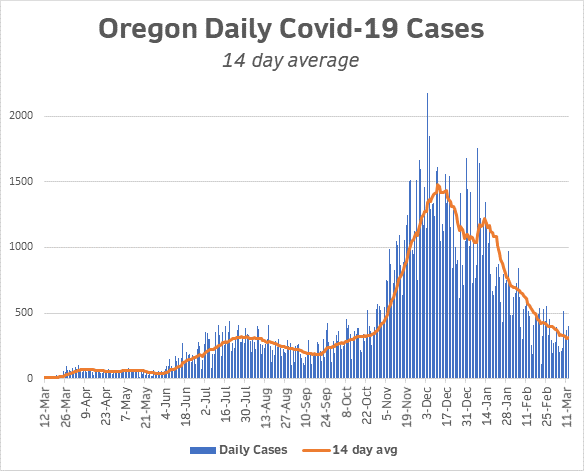
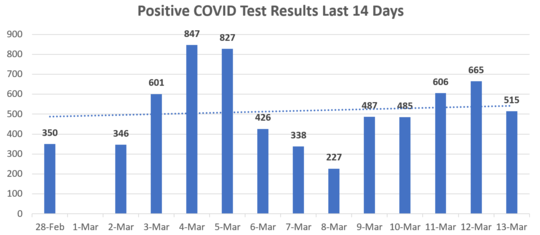
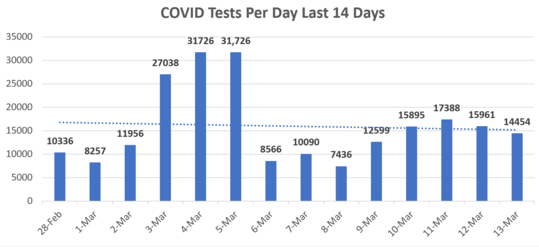
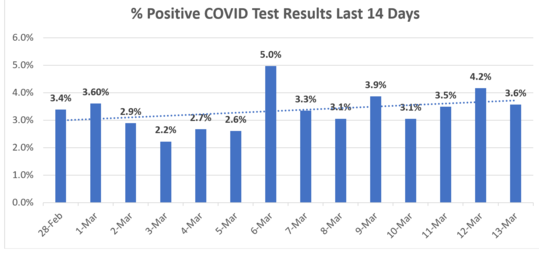

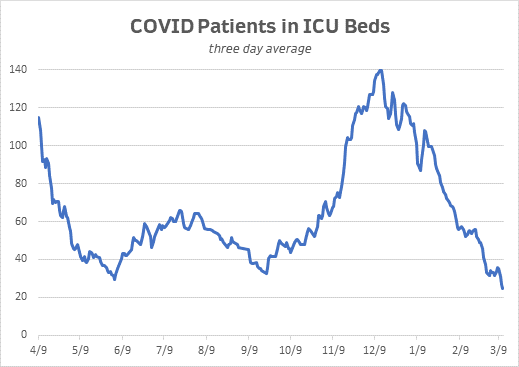
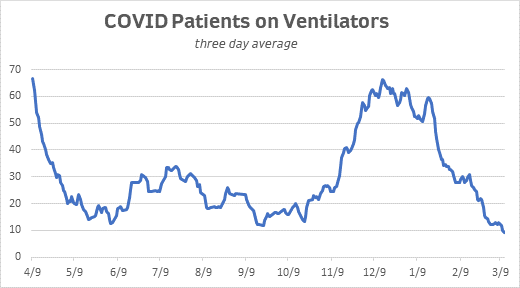

Want to See Past Newsletters?
If there was COVID-related information in a past newsletter that you want to go back to, but find you’ve deleted it, you can always go to my legislative website (senatordembrow.com), click on “News and Information,” and you’ll find them all there. Also, if someone forwarded you this newsletter and you’d like to get it directly, you can sign up for it there.
 
AND FINALLY,
Here again are some resources that you will find useful:
If the above links are not providing you with answers to your questions or directing you to the help that you need, please consider me and my office to be a resource. We’ll do our best to assist you or steer you in the right direction.
Best,
 Senator Michael Dembrow
District 23
email: Sen.MichaelDembrow@oregonlegislature.gov
web: www.senatordembrow.com
phone: 503-281-0608
mail: 900 Court St NE, S-407, Salem, OR, 97301
|